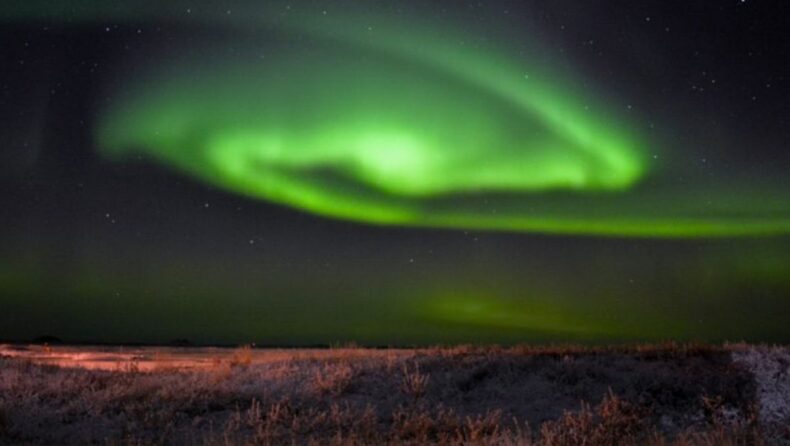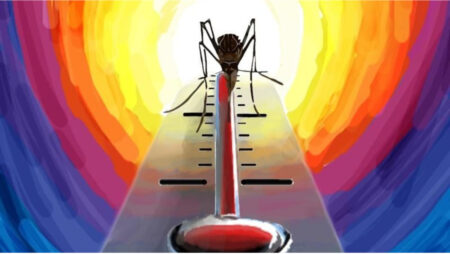Auroral activities are People have always loved to watch science-fiction movies, which present spectacular glares in the sky, strangely even more than fireworks in reality. Like floating around in the cosmic lights, this presentation of luminosity has overwhelmed the skywatchers and made them yearn to witness the Aurora Borealis, a natural phenomenon takin
As we all know, the sun gives us light, but it also contains an expanding atmosphere made up of charged particles and magnetic fields. The high-speed solar wind passes through Earth, but the planet’s magnetic field (consider a huge bar magnet with geographic north and south) can deflect it.
Because the magnetic barrier is weakest towards the poles of the “bar magnet,” aurora displays are more common at high latitudes.
Because the Earth’s tear-shaped magnetic field, which acts as a shield to protect us from solar wind and solar storms, traps charged particles in the magnetosphere and diverts them toward the geomagnetic poles, which are located near the geographic poles, auroras occur most frequently in areas south of the poles.
Electrons in Earth’s magnetosphere send their energy to oxygen and nitrogen atoms and molecules as particles collide with atoms and molecules in the upper atmosphere. The gases emit brief bursts of energy in the form of light as they return to their original state. The aurora is made up of a billion individual collisions that light up the Earth’s magnetic field.
The Discovery of Aurora
Some prehistoric cave paintings may have shown aurora. The Cro-Magnon drawings known as “Macaronis,” which were created approximately 30,000 B.C., have been speculated to represent pictures of the aurora.

The oldest recorded mention of an aurora is found in Chinese literature from 2600 B.C. that discusses Huangdi, the Yellow Emperor, one of ancient China’s five mythological emperors. Huangdi was regarded as a cosmic monarch and the founder of the centralized state.
Galileo Galilei, an Italian astronomer, and scientist invented the term “aurora borealis” in 1619.
Aurora is named after Aurora, the Roman goddess of dawn, while Borealis is named after Boreas, the Ancient Greek god of the north wind. Aurora australis is the term given to the southern aurora. The word “Australis” comes from the Latin word “Austra,” which means “South.”
After a trip to the Antarctic Circle between 1772 and 1775, British explorer James Cook developed the phrase “aurora australis.”Solar flares and coronal mass ejections are common during active solar years, while they are uncommon during quiet years. Solar cycles last roughly 11 years on average, but they can be shorter or longer depending on the intensity of activity.
Where are the aurorae visible?
The northern lights are frequently seen in Alaska, particularly in the Fairbanks area, which lies within the aurora oval. The northern lights can also be seen in Canada, Russia, Iceland, parts of the United States, Greenland’s high arctic tundra ecoregion, Sweden, Finland’s Lapland, and Norway.
The auroral oval lies largely over the oceans of Antarctica in the southern hemisphere, but it occasionally reaches the furthest reaches of New Zealand, Chile, Australia, and even Argentina and South Africa.
Because the Earth’s atmosphere contains a lot of atomic oxygen and human eyes are more sensitive to the hue green, green auroras are the most common. Furthermore, the blue and purple colors are difficult to see in the night sky. Lower altitudes may see more blue and purple lights, which are linked with molecular nitrogen.
These effects can cause unintended currents to flow across any electrical power infrastructure, resulting in damage and, in the worst-case scenario, power outages. The ionosphere is also disrupted, which has an impact on communications, and further out in space, where the charged particle environment becomes more energetic, satellites can be damaged.
Auroras are tough to put into words. They appear to appear and disappear; arcs begin at the horizon and spread upward; fluttering streamers, curtains, and beams can sometimes extend to the zenith. Auroras come in an almost limitless variety of shapes and sizes.
Unfortunately, we won’t be able to stand on Jupiter and gaze at the night sky because Jovian auroras are said to be out of this world, literally.
Edited by : Khushi Thakur
Published By : Shubham Ghulaxe













